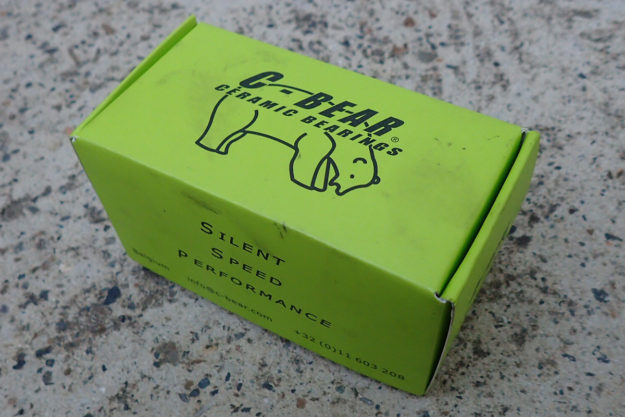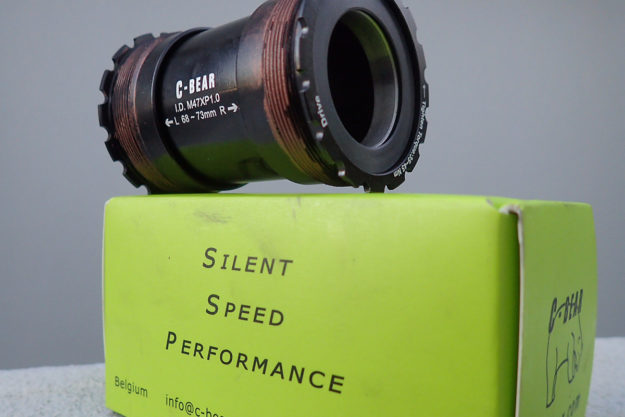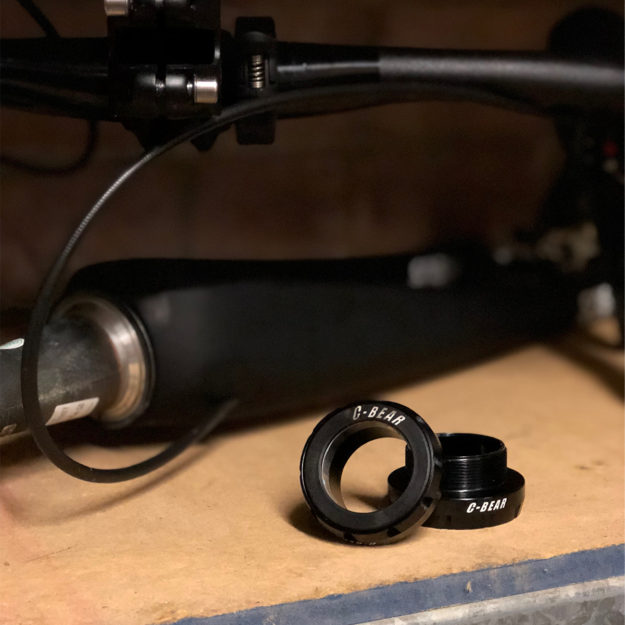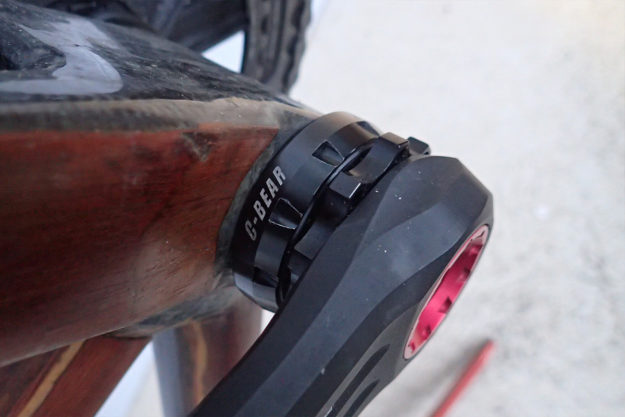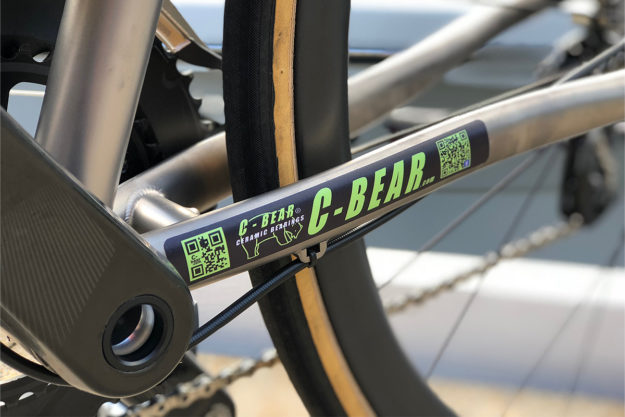Bottom brackets are a tricky thing to write about. They get installed in your frame, you use them until they start to feel rough, exhibit play or start getting noisy, then you replace them, right?
But what if none of that happened?
C-Bear has been in the bearing game for around ten years now. Its range of bottom brackets is dizzying, to say the least — name a setup and they’ll most likely have a BB that’ll fit the bill.
When they approached me to arrange a review, this made life both really easy and quite tricky at the same time. I’m used to being able to run a particular BB across a number of bikes with a number of different chainsets just by using adaptors.
However, adapters make for an imperfect union in one of the most important areas of the bike and that, rightly so, is an approach that C-Bear is not comfortable with.
The BB choice was hard because it meant I had to determine a solution that would work long enough for me to test the BB, which meant actually pinning down a constant build. Not easy, given my propensity to change bikes and try new products.
Having settled on a BSA30 – a threaded solution for running cranks with a 30mm axle on an ‘old school’ English-thread BB — the unit arrived from C-Bear’s Aussie distributor, FE Sports, and was paired with a Rotor 3D+ chainset for testing to commence.
Installation was ultimately unremarkable, yet that in itself is a testament to the quality of the BB. Our BB was supplied a tool and the BB cups were notched to perfectly pair with that tool — for C-Bear, that means big, deep and solid grooves, unlike other brands, allowing plenty of leverage and force to be applied.
The tool itself was perhaps a little awkwardly shaped, but it was still easy to install the BB to a decent torque. Many other big names could learn from these large, deep notches as it is all too easy to slip and damage cups making re-use or future removal quite tricky.
Once the cranks were in, the free movement of their rotation is hard to ignore. New BBs always feel fresh and spin smoothly, but are often tight until they have had some time to bed-in. With the C-Bear BB it feels like you could tighten the cranks with all your might and the BB would still spin as if it has no force preventing it.
In use, the difference is hard to quantify; and, to be completely honest, I’d be lying if I said I could genuinely feel a noticeable difference or genuinely quantify any improvement in efficiency — especially on a freshly built bike, or even when mounted on a bike that I haven’t ridden for a while. But then that’s not the whole point of a bottom bracket like this either.
When C-Bear was founded by Bart Schouten, he did so because he was unable to find bearings that offered a performance advantage through less friction, but that also had longevity and offered good value.
It’s that longevity component that has actually made this a hard review to write because, well, they just work; and they show no signs of stopping.
With regard to longevity, Bart produced two levels of bearings from the outset with C-Bear — the road race ‘R’ version, and the all-conditions ‘AC’ version.
The latter has double-sealed bearings, meaning it will see you through the worst of conditions with the only offset being a touch of extra drag. C-Bear recommends the AC version for humid conditions right through to MTB use.
That mention of value is a tricky one for some. On the face of it, C-Bear bottom brackets are expensive if you compare directly to an equivalent mass-produced alternative.
Consider a standard PressFit30 BB and you’re probably looking in the region of AU$65. The equivalent C-Bear example will set you back AU$250. However, you’re getting a set of sealed ceramic bearings in CNC machined aluminum cups with the C-Bear, whereas the standard unit will probably only offer steel bearings in a Delrin cup.
I would wager that the C-Bear unit would easily outlast the standard unit four times over — and, if you’re paying a shop mechanic to remove and install those for you, you would most likely have paid the same as the C-Bear by the time the third standard BB has been installed. And then there’s the fact that C-Bear is also generally better value like-for-like than their direct competitors.
C-Bear consider themselves pioneers in the use of precision machined CNC shells for BBs, but that’s not all they have led the way on. They were first to bring quality aftermarket solutions for Specialized’s OSBB combinations (including Campagnolo), for Trek’s BB90 & BB95 and, most recently, for the new ‘DUB’ crank axle format from SRAM.
They also utilize a system that they refer to as ‘BBR’, which relates to their positioning of the bearing within their cups as close to the crank arm as possible to maximize stiffness and power transfer.
With ceramic bearing derailleur jockey wheels and wheel bearing upgrade kits, C-Bear have got all bases covered. Machining quality that is second to none on products that will last for a significant proportion of the lifetime of a bike and work silently the whole time they’re installed; and with bearings of an incredible standard to boot, it’s little surprise that pro teams have turned to C-Bear in place of standard bearings.
Sure, the initial outlay may feel painful, but these are products which will pay for themselves over time. I haven’t had enough kilometers on this bottom bracket to even begin to wear it out.
If you choose to invest your bike will stay happier for longer, and I am absolutely convinced you will not regret it. As if to prove as much, I decided to put my money where my mouth is and spec a C-Bear BB on my own fresh Trek Domane build.






